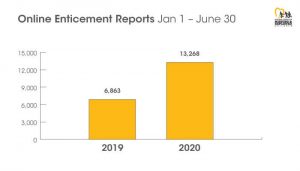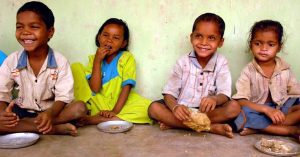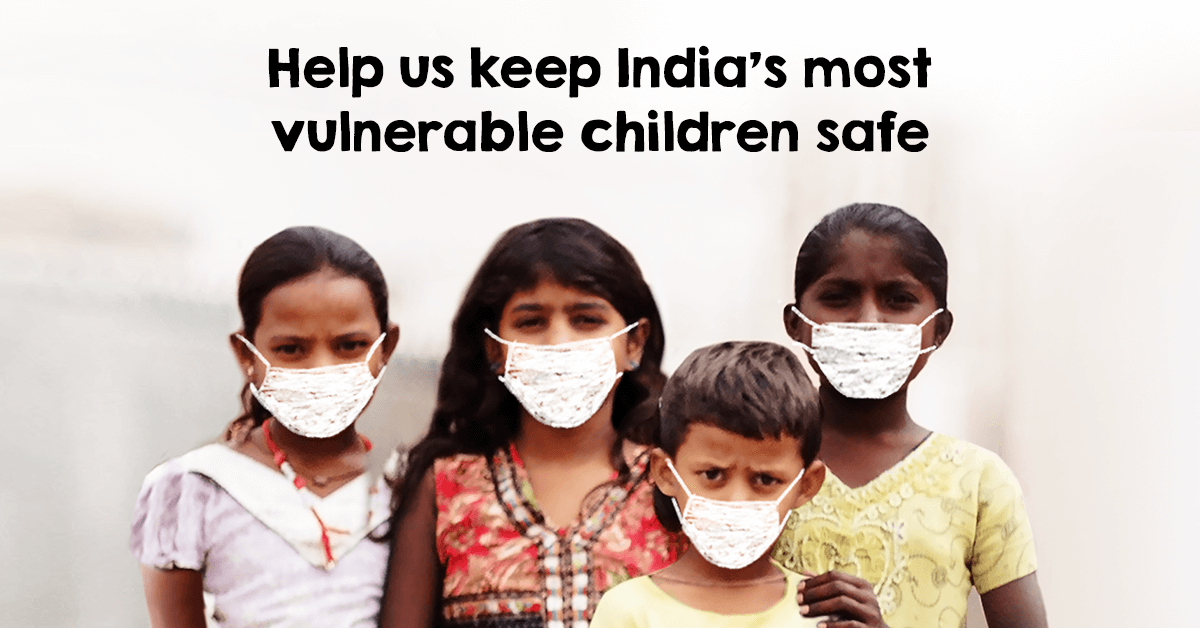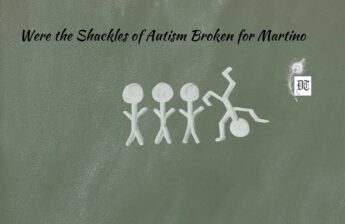Reading Time: 6 minutes
On World Day against Human Trafficking, here’s a shocking revelation, by CRY, about child trafficking in the post lockdown days. A report in Different Truths.
As India continues to grapple with the debilitating tolls levied by the Covid-19 pandemic, and as the overall attention has understandably focused on the more visible impacts of the humanitarian crisis, children are going to be one of Covid’s biggest unseen victims. Even though there is a scarcity of available data to substantiate the truth, ground-level pieces of evidence suggest that child trafficking, especially for forced labour and marriage among other reasons, is about to see worrying spikes as the lockdown begins to ease off, allowing transportation and movements to resume slowly, according to a media release from CRY.
Even though there is a scarcity of available data to substantiate the truth, ground-level pieces of evidence suggest that child trafficking, especially for forced labour and marriage among other reasons, is about to see worrying spikes as the lockdown begins to ease off, allowing transportation and movements to resume slowly
Documented experiences of previous disasters like the Ebola virus outbreak, floods and earthquakes suggest that there is a multifold increase in vulnerabilities immediately after any large scale humanitarian crisis, often leading to cases of unsafe migrations, and this holds true for cases of trafficking as well. There are massive livelihood issues resulting in an increase of multi-dimensional poverty, escalated by the pandemic and back to back natural disasters like cyclones in West Bengal and Maharashtra, locust attacks in central India and floods in Assam and Bihar. Hence, the fear is, coming months will witness huge numbers of unsafe migrations and child trafficking, it was informed.
The release added, trends, as reflected by the recent NCRB data, indicates that children have consistently accounted for more than 40% of trafficking victims in the country over the last 5 years. Girls, in particular, constituted a majority of the victims of trafficking as in 2017 and 2018, more than 80% of trafficked children were girls.
…trends, as reflected by the recent NCRB data, indicates that children have consistently accounted for more than 40% of trafficking victims in the country over the last 5 years. Girls, in particular, constituted a majority of the victims of trafficking as in 2017 and 2018, more than 80% of trafficked children were girls.
Drawing attention to the gravity of the situation, Priti Mahara, Director, Policy  Research and Advocacy at CRY – Child Rights and You said, “NCRB 2018 data indicates that commercial sexual exploitation, forced labour and forced marriage account for a majority of the human trafficking (almost 6o% of all trafficking cases). This single piece of information is enough to suggest how vulnerable our children had already been before the pandemic struck, and we are seriously concerned as to what extent it will affect them in the time to come, especially the children coming from the marginalised and economically vulnerable communities.”
Research and Advocacy at CRY – Child Rights and You said, “NCRB 2018 data indicates that commercial sexual exploitation, forced labour and forced marriage account for a majority of the human trafficking (almost 6o% of all trafficking cases). This single piece of information is enough to suggest how vulnerable our children had already been before the pandemic struck, and we are seriously concerned as to what extent it will affect them in the time to come, especially the children coming from the marginalised and economically vulnerable communities.”
According to the ground-level experiences gathered by CRY and its various partner organisations working on child protection issues, cases of trafficking and missing children were less prevalently reported during the lockdown months primarily due to suspension of transport, and movement of people. However, since child protection services are yet to be considered as essential services, and with children having limited access to people of trust, helplines and so on, trafficking may eventually increase as the country enters the unlock phase, experts suggest. Railways and road transport being the most commonly used medium of transit for trafficked children, the number of cases are likely to increase with trains and buses resuming service, stated the media release.
Apprehending a spurt in child trafficking and child abuse brought about by the pandemic, the Calcutta High Court has already directed the West Bengal State Government to take all possible steps to protect children. The High Court order came in the wake of a report on child trafficking and child marriage submitted by the West Bengal Commission for Protection of Child Rights (WBCPCR). The report has provided data from March 20 to April 14, on cases of child marriage, child trafficking, sexual abuse against children and other incidents of violation of child rights
Apprehending a spurt in child trafficking and child abuse brought about by the pandemic, the Calcutta High Court has already directed the West Bengal State Government to take all possible steps to protect children. The High Court order came in the wake of a report on child trafficking and child marriage submitted by the West Bengal Commission for Protection of Child Rights (WBCPCR). The report has provided data from March 20 to April 14, on cases of child marriage, child trafficking, sexual abuse against children and other incidents of violation of child rights, the Calcutta High Court division bench observed. “We would be failing in our duty if we cannot protect the children from any kind of abuse including their exploitation,” the bench further noted.
In a similar move, the Supreme Court of India has sought the Centre and the National Disaster Management Authority’s (NDMA) reply on the alleged rise in children trafficking cases during the COVID-19 lockdown in the country. A bench comprising Chief Justice SA Bobde and Justices AS Bopanna and Hrishikesh Roy indicated that it may set an ‘experts’ committee’ to look into the matter.
Taking cognizance of the worrying situation, the Ministry of Home Affairs (MHA) has come up with an advisory for all states and UTs on preventing and combatting human trafficking especially during the period of COVID-19 pandemic
 Taking cognizance of the worrying situation, the Ministry of Home Affairs (MHA) has come up with an advisory for all states and UTs on preventing and combatting human trafficking especially during the period of COVID-19 pandemic, it was informed.
Taking cognizance of the worrying situation, the Ministry of Home Affairs (MHA) has come up with an advisory for all states and UTs on preventing and combatting human trafficking especially during the period of COVID-19 pandemic, it was informed.
“These incidences clearly underscore the gravity of the situation and indicate that the top levels of the Executive and the Judiciary do acknowledge the same. While it is heartening to see this, we do hope that the long-pending Trafficking of Persons (Prevention, Protection and Rehabilitation) Bill, 2018 which was passed in Lok Sabha but is still waiting in the Rajya Sabha is made more robust and child-centric, and linked with existing child protection structures to address the crisis adequately,” Priti Mahara said.
Traffickers are beginning to exploit modern communication technologies to carry out activities such as identifying victims, online grooming, circulating pornographic and Child Sexual Abuse Material (CSAM) among others that aid trafficking
With restricted movement and increased presence of law enforcement personnel during the lockdown, one may think that it would help dissuade crime, however, in the case of trafficking, has pushed the perpetrators further underground. Traffickers are beginning to exploit modern communication technologies to carry out activities such as identifying victims, online grooming, circulating pornographic and Child Sexual Abuse Material (CSAM) among others that aid trafficking, stated the media release.
Elaborating on the lack of adequate budgetary allocations to tackle the situation, she said, “A comprehensive plan to protect the children needs adequate investment. However, the proportion of the budget for children in overall union budget has shown a continuous decrease over the past five years from 3.26 (2015-16 BE) to 3.16 per cent (2020-21 BE), which has been the lowest in the last five years.”
Elaborating on the lack of adequate budgetary allocations to tackle the situation, she said, “A comprehensive plan to protect the children needs adequate investment. However, the proportion of the budget for children in overall union budget has shown a continuous decrease over the past five years from 3.26 (2015-16 BE) to 3.16 per cent (2020-21 BE), which has been the lowest in the last five years.”
“Specifically under Child Protection, the gradual rise in financial allocations over the years shows both the scope of extending the umbrella of child protection

services and the constraint under which they have been operating since the Integrated Child Protection Scheme (ICPS) was first operationalized in 2009. Unfortunately, this trend did not continue this year, and despite growing safety concerns around children’s safety, this year’s budgetary allocations for child protection declined from 2.15 per cent (2019-20 BE) to 2 per cent (2020-21 BE). The changes in the scenario due to the pandemic will, however, turn the optimal usage of resources into a challenge and require an increase in the budget proportion to safeguard children effectively,” Priti concluded.
Photo from the Internet












